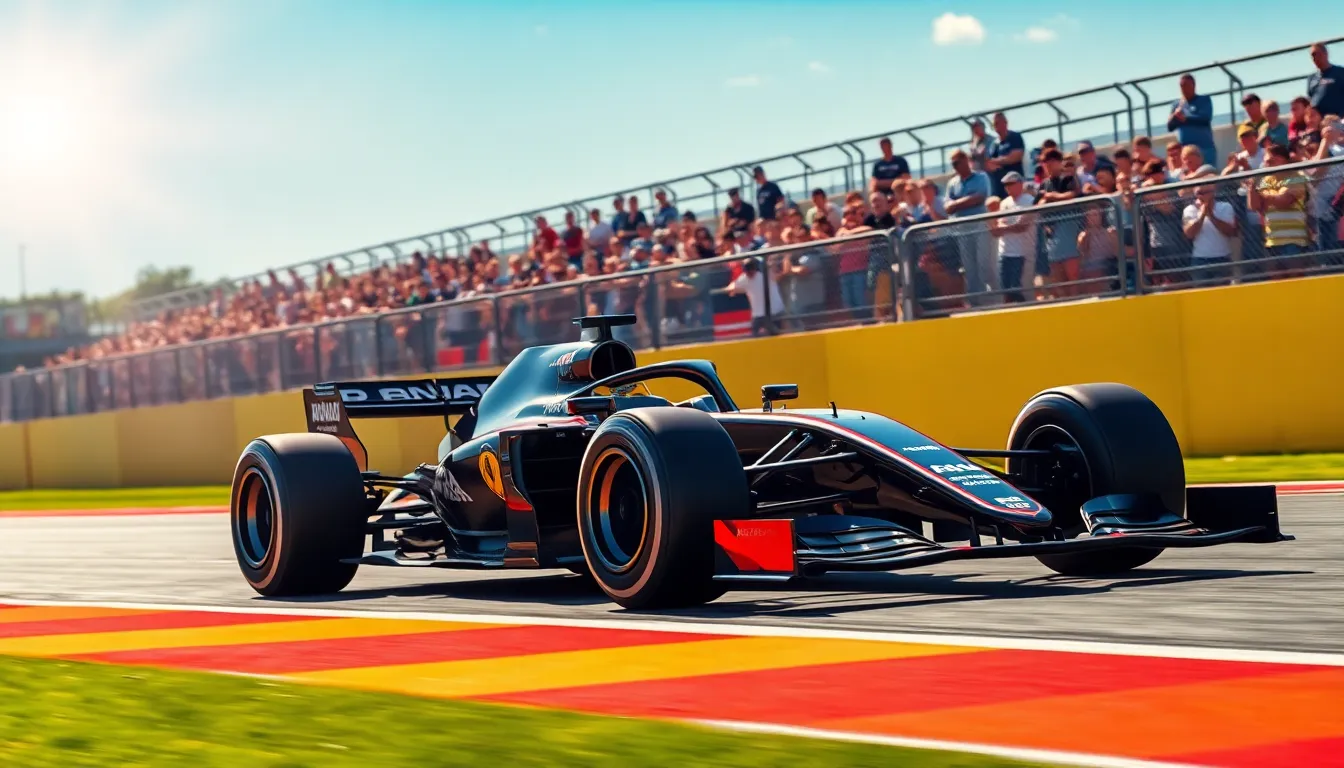The roar of engines and the smell of burning rubber create an intoxicating atmosphere that’s captivated millions of fans worldwide. Car racing represents the ultimate fusion of human skill technology and pure adrenaline where split-second decisions can mean the difference between victory and defeat.
From the legendary circuits of Formula 1 to the high-speed ovals of NASCAR and the endurance challenges of Le Mans we’ve witnessed countless moments that define automotive excellence. These motorsport disciplines push both drivers and machines beyond their limits creating unforgettable spectacles that leave us on the edge of our seats.
Whether you’re a seasoned racing enthusiast or someone curious about the industry of competitive motorsport we’ll explore what makes car racing one of the most thrilling sports on the planet. The combination of cutting-edge engineering fearless competitors and strategic teamwork creates a perfect storm of excitement that continues to evolve with each passing season.
The Evolution of Cars Racing Through the Decades
The transformation of competitive motorsport spans over a century of remarkable innovation and human achievement. We’ve witnessed racing evolve from simple speed contests between wealthy enthusiasts to sophisticated global entertainment spectacles featuring cutting-edge automotive technology.
Early Automotive Racing Pioneers
Automobile competitions began in the late 1800s when daring inventors sought to prove their mechanical creations. The Paris-Rouen race of 1894 marked the first official motor race, covering 78 miles with steam-powered and gasoline vehicles competing side by side. We can trace modern motorsport DNA back to these courageous pioneers who risked everything for automotive progress.
Racing circuits emerged throughout Europe and America during the early 1900s as manufacturers recognized competitive value. The Indianapolis Motor Speedway opened in 1909, establishing the foundation for what would become the Indianapolis 500. We saw legendary figures like Barney Oldfield and Louis Chevrolet push primitive race cars to their mechanical limits on dirt tracks and board speedways.
Safety considerations were virtually nonexistent in early racing decades, making drivers true daredevils. Death rates remained alarmingly high through the 1920s and 1930s as vehicles lacked basic protective equipment. We remember this era for its raw courage and mechanical simplicity, where success depended entirely on driver skill and mechanical reliability.
Modern Racing Technology Advancements
Computer-assisted engineering revolutionized racing vehicle development starting in the 1980s. Wind tunnel testing became standard practice, allowing teams to optimize aerodynamic efficiency through precise data analysis. We now see Formula 1 cars generating massive downforce levels that would’ve been impossible without computational fluid dynamics.
Electronic systems transformed how drivers interact with their racing machines throughout recent decades. Anti-lock braking systems, traction control, and telemetry monitoring provide real-time performance feedback to pit crews. We’ve observed NASCAR teams using sophisticated data analytics to make split-second strategic decisions during races.
Materials science breakthroughs enabled lighter, stronger racing components across all motorsport categories. Carbon fiber construction replaced traditional steel frameworks, reducing vehicle weight while improving crash protection. We continue seeing innovations like hybrid powertrains and advanced tire compounds pushing performance boundaries beyond what early racing pioneers could’ve imagined.
Formula 1: The Pinnacle of International Cars Racing
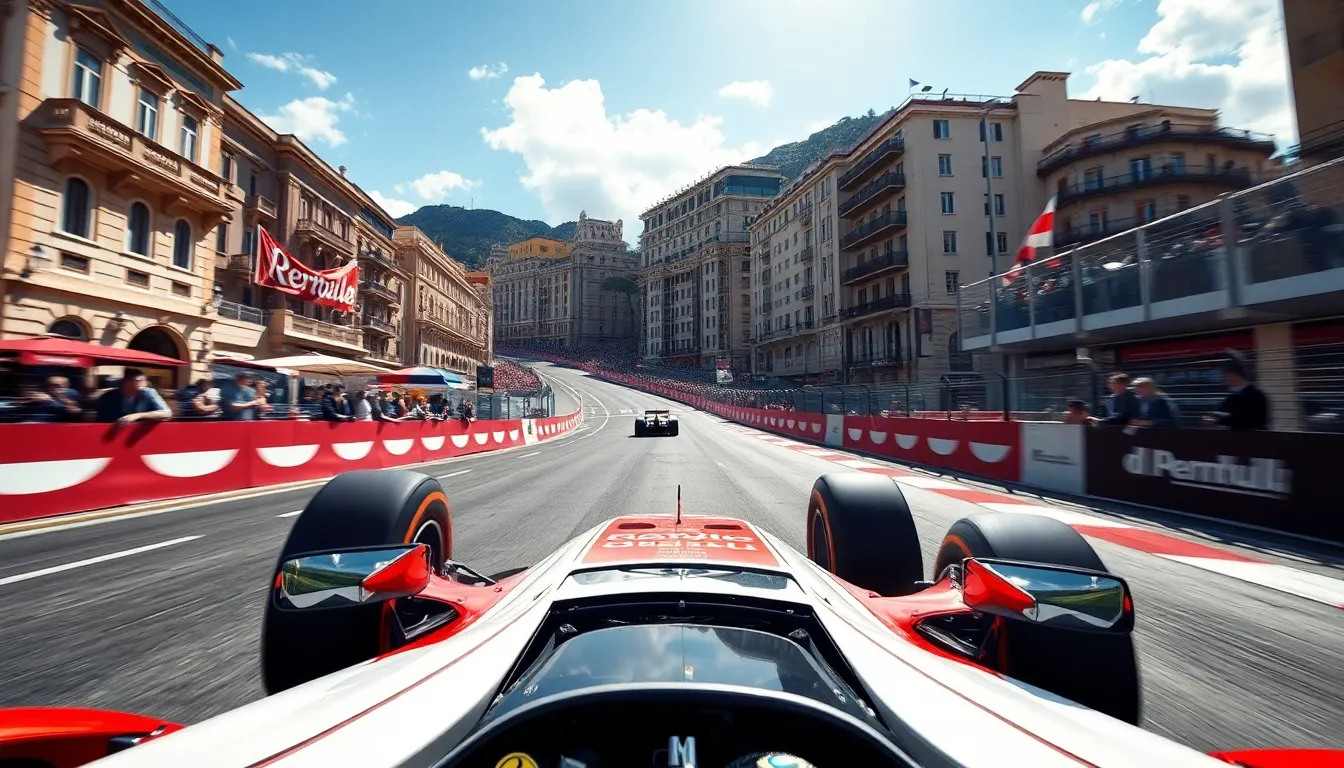
Formula 1 represents the ultimate expression of motorsport excellence, combining cutting-edge technology with unmatched driver skill. We’ve witnessed this premier racing series evolve into a global phenomenon that captivates millions of fans across six continents.
Championship Structure and Rules
Formula 1’s championship structure operates through a sophisticated points system that rewards consistency and excellence throughout the season. Drivers earn points based on their finishing positions, with the race winner receiving 25 points, second place earning 18 points, and third place securing 15 points. The remaining point-scoring positions follow a descending scale down to 10th place, which awards a single point.
Race weekends unfold across three days, featuring practice sessions, qualifying rounds, and the main Grand Prix event. Qualifying determines grid positions through a knockout system called Q1, Q2, and Q3, where the slowest drivers face elimination in each segment. Teams must navigate complex technical regulations that govern everything from engine specifications to aerodynamic components.
The Constructors’ Championship runs parallel to the Drivers’ Championship, with teams accumulating points from both their drivers’ performances. Each team fields exactly two cars per race, creating strategic opportunities for coordinated racing tactics. Points earned by both drivers contribute to the team’s total, making every position crucial for championship success.
Legendary Drivers and Teams
Lewis Hamilton stands as Formula 1’s most successful driver in terms of race victories, with over 100 Grand Prix wins throughout his career. Michael Schumacher’s seven industry championships remained the gold standard until Hamilton matched this achievement in recent years. Ayrton Senna’s legendary status stems from his exceptional wet weather driving abilities and his tragic death at the 1994 San Marino Grand Prix.
Ferrari holds the distinction as Formula 1’s most successful constructor, with over 230 race victories and 16 Constructors’ Championships since the series began in 1950. McLaren’s golden era during the late 1980s and early 1990s produced some of the sport’s most memorable moments, particularly with drivers like Senna and Alain Prost. Mercedes has dominated the hybrid era since 2014, securing eight consecutive Constructors’ titles through superior power unit technology.
Teams like Red Bull Racing have redefined strategic thinking in modern Formula 1, utilizing data analytics and pit stop efficiency to gain competitive advantages. Williams Racing’s innovative ground effect cars of the early 1980s revolutionized aerodynamic design principles that still influence current regulations.
Iconic Racing Circuits Worldwide
Monaco’s Monte Carlo circuit remains Formula 1’s most prestigious venue, where drivers navigate narrow streets at speeds exceeding 180 mph through the principality’s urban industry. Silverstone Circuit in England hosts the British Grand Prix and features high speed corners like Copse and Maggotts that test both car performance and driver courage. Spa Francorchamps in Belgium challenges competitors with its 4.3-mile layout, including the famous Eau Rouge corner sequence that demands precise throttle control.
Monza’s Italian Grand Prix venue earned the nickname “Temple of Speed” due to its long straights and passionate tifosi who create an electric atmosphere during Ferrari’s home race. Circuit de Monaco’s tight confines make overtaking nearly impossible, placing premium importance on qualifying position and strategic pit timing. Suzuka Circuit in Japan features a unique figure-eight layout that includes the challenging 130R corner and the technical Spoon Curve section.
Interlagos in Brazil has produced some of Formula 1’s most dramatic weather-affected races, with its elevation changes and unpredictable climate creating opportunities for unexpected results. Circuit Gilles Villeneuve in Montreal combines long straights with tight chicanes, often producing thrilling wheel-to-wheel racing through the Harbor Chicane complex.
NASCAR: America’s Premier Stock Car Racing Series

NASCAR stands as America’s most iconic motorsport series, featuring powerful stock cars racing at speeds exceeding 200 mph on oval tracks across the nation. We witness drivers navigate intense pack racing scenarios where split-second decisions determine victory or devastating crashes.
The Daytona 500 Spectacle
Crown jewel of NASCAR racing, the Daytona 500 kicks off each season with unmatched excitement and prestige. We see over 100,000 fans pack Daytona International Speedway every February to witness “The Great American Race” unfold over 500 miles of high-speed competition.
Prize money reaches astronomical levels, with winners earning over $1.5 million in total purse money from this single event. Drivers like Dale Earnhardt Jr., Jeff Gordon, and Jimmie Johnson have cemented their legacies through Daytona 500 victories that define entire careers.
Television viewership consistently peaks during this premier event, drawing over 9 million viewers annually and making it one of the most-watched sporting events in America. Broadcasting partnerships with FOX Sports showcase the race’s dramatic moments through advanced camera technology and expert commentary.
Qualifying procedures create intense drama through the unique Daytona 500 format, where drivers must secure their starting positions through qualifying races called the Bluegreen Vacations Duels. We observe how these preliminary races often produce spectacular finishes and unexpected storylines.
Regional Racing Divisions
Three national series form NASCAR’s competitive structure: the NASCAR Cup Series, Xfinity Series, and Truck Series, each offering distinct racing experiences and career development paths. We follow drivers as they progress through these tiers, building skills and fan followings.
Cup Series represents the pinnacle of American stock car racing, featuring 36 races annually at iconic venues like Talladega Superspeedway, Bristol Motor Speedway, and Charlotte Motor Speedway. Championship contenders battle through regular season races before entering the playoff format that crowns each year’s champion.
Xfinity Series serves as the primary developmental league, where rising stars like Christopher Bell and Tyler Reddick honed their create before advancing to Cup Series competition. We witness emerging talent showcase their abilities while competing alongside established veterans.
Truck Series delivers unique racing dynamics through shorter wheelbases and different aerodynamic packages that create closer competition and more frequent lead changes. Racing enthusiasts appreciate the series’ accessibility and the opportunity to see future stars in action.
Fan Culture and Traditions
Tailgating transforms race weekends into multi-day celebrations where families gather in sprawling infield campgrounds and parking areas surrounding major speedways. We experience the community atmosphere as fans share meals, play games, and display elaborate RV setups decorated with driver merchandise.
Driver loyalty runs exceptionally deep among NASCAR fans, who often support the same driver or team for decades and pass their allegiances down through generations. Fan clubs organize travel groups, coordinate matching outfits, and create elaborate displays supporting their favorite competitors.
Merchandise sales reflect passionate fandom, with fans purchasing everything from die-cast car collections and apparel to customized camping equipment featuring driver numbers and sponsors. We observe how these purchases create important revenue streams that support teams and drivers throughout the season.
Regional attendance patterns show strong geographical preferences, with Southern tracks like Darlington Raceway and Richmond Raceway maintaining devoted local followings while expanding into markets like Las Vegas and Chicago. Racing traditions include pre-race ceremonies, driver introductions, and the singing of the national anthem that unite diverse audiences in shared American motorsport heritage.
IndyCar Racing: Open-Wheel Speed Champions
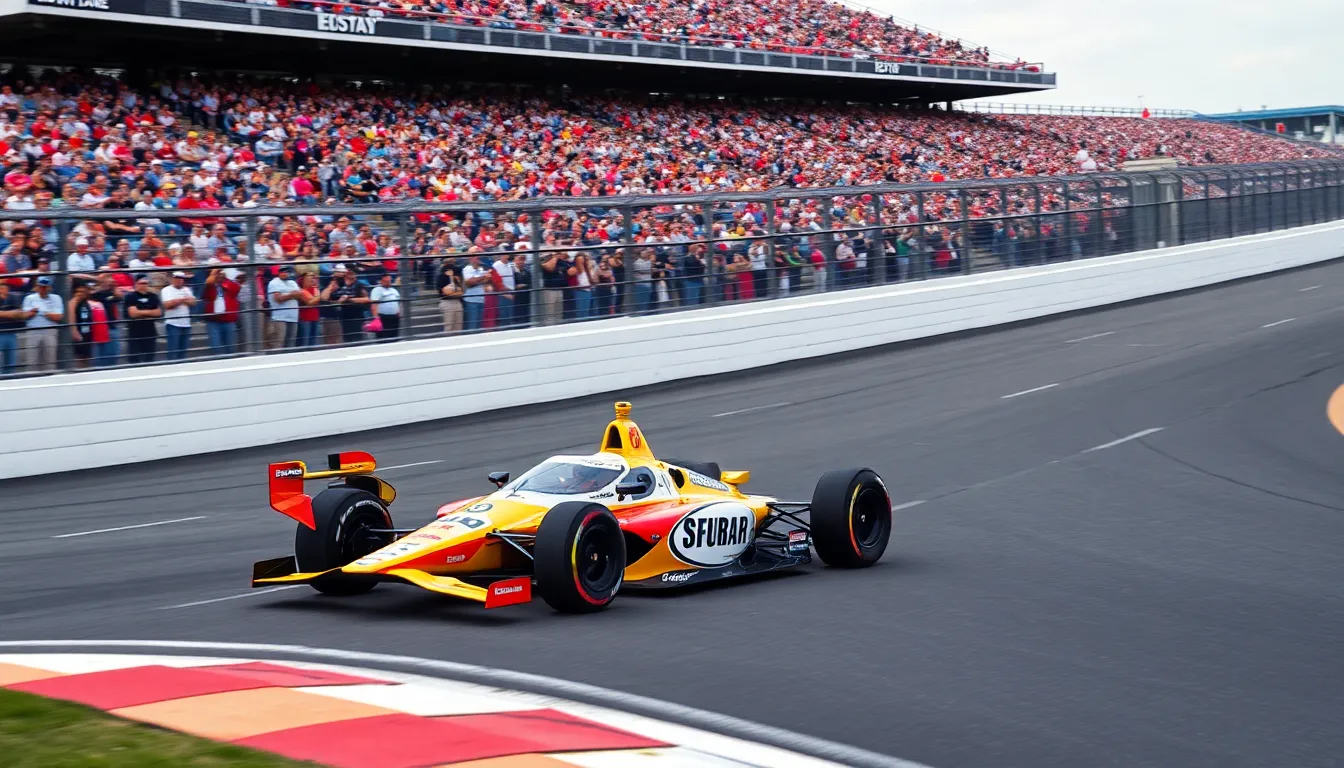
IndyCar represents America’s premier open wheel racing series, delivering breathtaking speeds and technical precision that rivals Formula 1’s global spectacle.
Indianapolis 500 Legacy
Racing excellence reaches its American pinnacle at the Indianapolis Motor Speedway during the legendary Indianapolis 500. Founded in 1911, this iconic race transforms Memorial Day weekend into motorsport’s most anticipated event, drawing over 300,000 spectators annually. We witness drivers navigate 200 laps around the 2.5 mile oval at average speeds exceeding 230 mph.
Victory at Indianapolis carries prestige unlike any other American racing achievement. Champions earn their place in motorsport history alongside legends like A.J. Foyt, Rick Mears, and Hélio Castroneves, each claiming four Indianapolis 500 victories. Prize money typically exceeds $2 million for the winner, making it one of the richest single day sporting events worldwide.
Traditional elements define the Indianapolis 500 experience beyond pure racing competition. Milk drinking ceremonies honor winners, while “Back Home Again in Indiana” stirs emotions before each race start. We recognize these customs as integral parts of American motorsport heritage that connect generations of racing enthusiasts.
Street Course Challenges
Urban racing circuits test IndyCar drivers’ adaptability across concrete barriers and city landscapes. Street courses like Long Beach, Toronto, and St. Petersburg feature narrow racing lines with minimal margin for error. Speeds drop to approximately 180 mph on straightaways, but precision becomes paramount through tight corner sequences.
Track surface variations create unique handling challenges throughout street course weekends. Concrete sections provide different grip levels compared to asphalt, requiring suspension adjustments and tire strategy modifications. We observe how drivers must master elevation changes and temporary barriers that don’t exist on permanent racing facilities.
Fan accessibility increases dramatically during street course events in major metropolitan areas. Downtown locations allow spectators to experience IndyCar racing without traveling to dedicated speedways. Weekend festivals surrounding races generate important economic impact, with cities reporting millions in tourism revenue during race weekends.
Technical Specifications
IndyCar chassis specifications emphasize both performance and safety through standardized design elements. All cars use Dallara DW12 chassis featuring carbon fiber monocoques that weigh approximately 1,620 pounds without fuel. Chevrolet and Honda provide twin turbocharged V6 engines producing around 700 horsepower on oval tracks.
| Component | Specification | Performance Impact |
|---|---|---|
| Engine | 2.2L Twin Turbo V6 | 700+ horsepower |
| Weight | 1,620 lbs (dry) | Enhanced acceleration |
| Downforce | Variable by track | Cornering stability |
| Top Speed | 240+ mph | Oval track capability |
Aerodynamic packages adjust based on track configuration to optimize performance characteristics. Oval racing utilizes low downforce setups maximizing straight line speed, while road courses require high downforce configurations for cornering grip. We see how teams balance drag reduction with mechanical grip to achieve competitive lap times.
Safety innovations continue advancing through ongoing research and development partnerships. SAFER barriers, HANS devices, and cockpit protection systems significantly reduce injury risks during high speed incidents. Carbon fiber construction provides exceptional crash protection while maintaining the lightweight properties essential for competitive performance.
Drag Racing: Quarter-Mile Speed Demons
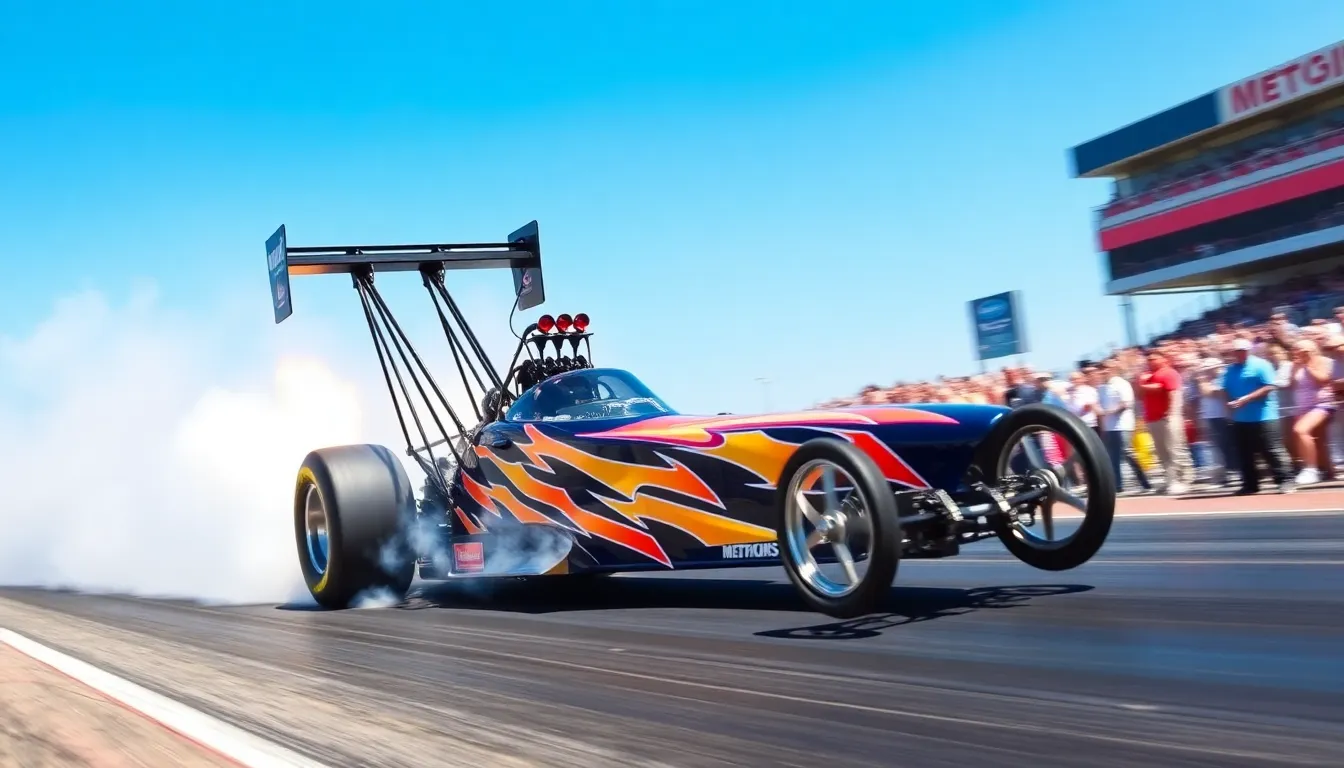
We enter a area where pure acceleration reigns supreme and vehicles launch from zero to incredible speeds in mere seconds. Drag racing distills motorsport to its most fundamental element: who can travel a straight quarter mile the fastest.
Top Fuel Dragster Categories
Top Fuel dragsters represent the absolute pinnacle of acceleration in motorsport, generating over 11,000 horsepower from their supercharged nitromethane engines. These mechanical marvels accelerate from 0 to 100 mph in less than one second and complete the quarter mile in under 3.7 seconds at speeds exceeding 330 mph.
Funny Car divisions feature shorter wheelbases and carbon fiber bodies that resemble production vehicles while housing similar powerplants to Top Fuel dragsters. Drivers sit much closer to the massive engines compared to the lengthy Top Fuel configurations, creating a different driving experience even though comparable performance numbers.
Pro Stock categories showcase naturally aspirated gasoline engines that produce approximately 1,400 horsepower while maintaining the appearance of factory muscle cars like Camaros and Mustangs. These vehicles complete quarter mile runs in the low six second range, demonstrating impressive performance from more conventional powertrains.
Pro Stock Motorcycle classes deliver two wheeled acceleration that rivals four wheeled competitors, with heavily modified bikes reaching speeds over 200 mph in just 1,320 feet. Riders experience extreme physical demands as they control machines that can wheelie uncontrollably if not managed precisely during launch.
Street Legal Racing Classes
Super Stock divisions allow racers to compete with production based vehicles that maintain strict adherence to manufacturer specifications while permitting exact modifications. Competitors must demonstrate their cars remain street legal with functional lights, license plates, and emission controls in many sanctioning organizations.
Stock Eliminator categories feature unmodified production vehicles that compete in handicapped elimination rounds based on factory performance ratings. Racers receive time allowances or penalties depending on their vehicle’s original specifications, creating competitive balance between different makes and models.
Bracket Racing formats enable drivers with various vehicle types to compete head to head using predicted elapsed times rather than raw performance. Participants dial in their expected quarter mile time before each round, with victories determined by who comes closest to their prediction without running faster.
Street Outlaws competitions showcase heavily modified street cars that often produce 2,000+ horsepower while maintaining road going appearances and equipment. These events typically occur on public roads after hours, though many have moved to sanctioned tracks due to safety and legal concerns.
Record-Breaking Performances
NHRA Top Fuel records currently stand at 3.623 seconds and 338.17 mph, set by multiple drivers who continue pushing the boundaries of what these machines can achieve. Brittany Force holds the current speed record while several drivers share elapsed time achievements within thousandths of seconds.
Funny Car benchmarks show similar progression with current records at 3.793 seconds and 339.87 mph, demonstrating how close these categories perform even though their different configurations. Robert Hight and several other drivers have traded records throughout recent seasons as teams develop new technologies.
Electric vehicle achievements are rapidly advancing with some electric dragsters now running low eight second quarter miles while producing instant torque that creates different acceleration characteristics. Tesla Model S Plaid vehicles have achieved sub 9 second times in street trim, showing how electric technology impacts traditional drag racing.
Import performance milestones include Honda Civics running in the sevens and Nissan GT-Rs achieving similar times with advanced all wheel drive systems and turbo technology. These achievements demonstrate how modern import tuning has reached performance levels once reserved for traditional American muscle cars.
Rally Racing: Off-Road Adventure Competition
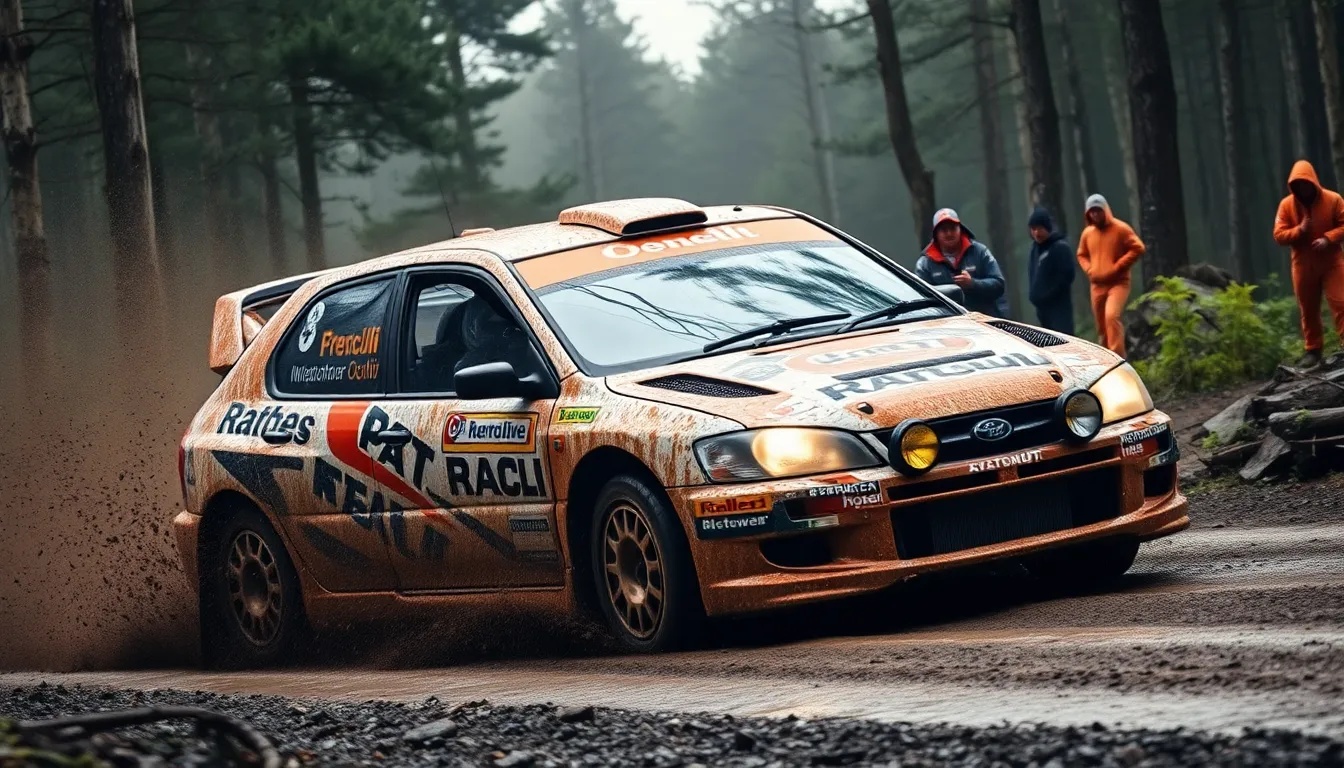
Rally racing transforms our perception of motorsport by taking cars racing beyond traditional circuits into nature’s most challenging terrain. We witness drivers and their machines battle through forests, mountains, and deserts at speeds that defy logic.
Industry Rally Championship Events
Monte Carlo Rally opens the WRC calendar each January with its legendary ice and snow stages through the French Alps. Drivers navigate treacherous mountain roads where grip changes from corner to corner, demanding split-second tire choice decisions. We’ve watched champions like Sébastien Loeb and Sébastien Ogier master these conditions with precision that seems almost supernatural.
Rally Finland delivers the fastest stages in the championship, where cars launch over crests at speeds exceeding 120 mph. Forest roads lined with trees create a tunnel effect that requires absolute commitment from drivers. Spectators gather at jump points to witness cars flying through the air for distances of over 100 feet.
Rally Wales GB tests endurance through Britain’s muddy forest stages, where grip disappears and visibility drops to mere meters. Rain transforms already challenging routes into slip-and-slide adventures that separate the skilled from the reckless. Welsh stages feature some of the narrowest roads in the championship, with stone walls mere inches from racing lines.
Safari Rally Kenya returned to the WRC calendar in 2021, bringing back Africa’s most brutal test of machinery and human endurance. Temperatures exceed 90°F while dust clouds reduce visibility to zero, forcing drivers to rely purely on pace notes and instinct. Wildlife crossings add an element of unpredictability that no other motorsport can match.
Navigation and Co-Driver Roles
Pace notes serve as the lifeline between driver and co-driver, creating a coded language that describes every corner, crest, and hazard at racing speeds. Co-drivers scout stages during reconnaissance runs, walking sections to identify optimal racing lines and potential dangers. We observe how these partnerships develop their own shorthand systems, with calls like “medium right over crest” delivered with split-second timing.
Trust between teammates becomes paramount when cars hurtle through blind corners at 80 mph based solely on verbal instructions. Co-drivers must maintain composure while reading notes accurately, even when the car slides sideways or launches airborne. Their responsibilities extend beyond navigation to include timing, mechanical monitoring, and strategic decisions about tire choices.
Rally computers assist co-drivers in tracking stage times, distances, and competitive positioning throughout multi-day events. Modern systems integrate GPS data with traditional timing methods, though drivers still rely primarily on human navigation skills. We’ve seen technology failures force crews to navigate using only basic instruments and their partnership experience.
Communication systems must function flawlessly even though engine noise, suspension impacts, and extreme G-forces that can reach 4Gs during jumps. Intercom quality becomes critical when fractions of seconds determine whether crews avoid trees or find the racing line through technical sections. Professional teams invest heavily in noise-canceling technology and backup communication systems.
Extreme Weather Conditions
Snow and ice racing transforms rally cars into precision instruments that dance across frozen surfaces using studded tires and specialized suspension setups. Temperatures dropping below -20°F create challenges for both machinery and crew endurance, requiring engine warming systems and heated driver compartments. We witness how Scandinavian drivers excel in these conditions, having grown up handling winter roads at high speeds.
Desert heat racing pushes cooling systems to their limits while creating dust storms that engulf entire rally stages. Radiator efficiency becomes crucial when ambient temperatures exceed 100°F and engines generate additional heat under racing stress. Crews must manage water consumption carefully during multi-day desert events where dehydration affects both performance and safety.
Torrential rain events turn dirt roads into rivers and tarmac stages into skating rinks, where hydroplaning occurs at speeds as low as 40 mph. Visibility drops to zero behind other cars, forcing drivers to rely entirely on co-driver instructions and their understanding of road layouts. We’ve observed how weather conditions can completely reshape championship standings when some crews excel while others struggle.
Altitude challenges affect both engine performance and human physiology during mountain rallies, where thin air reduces power output by up to 20%. Turbocharger mapping requires adjustment for elevation changes that can exceed 6,000 feet within single stages. Crews experience fatigue more quickly at high altitudes, making physical conditioning as important as driving skills for championship success.
Sports Car Endurance Racing Marathons
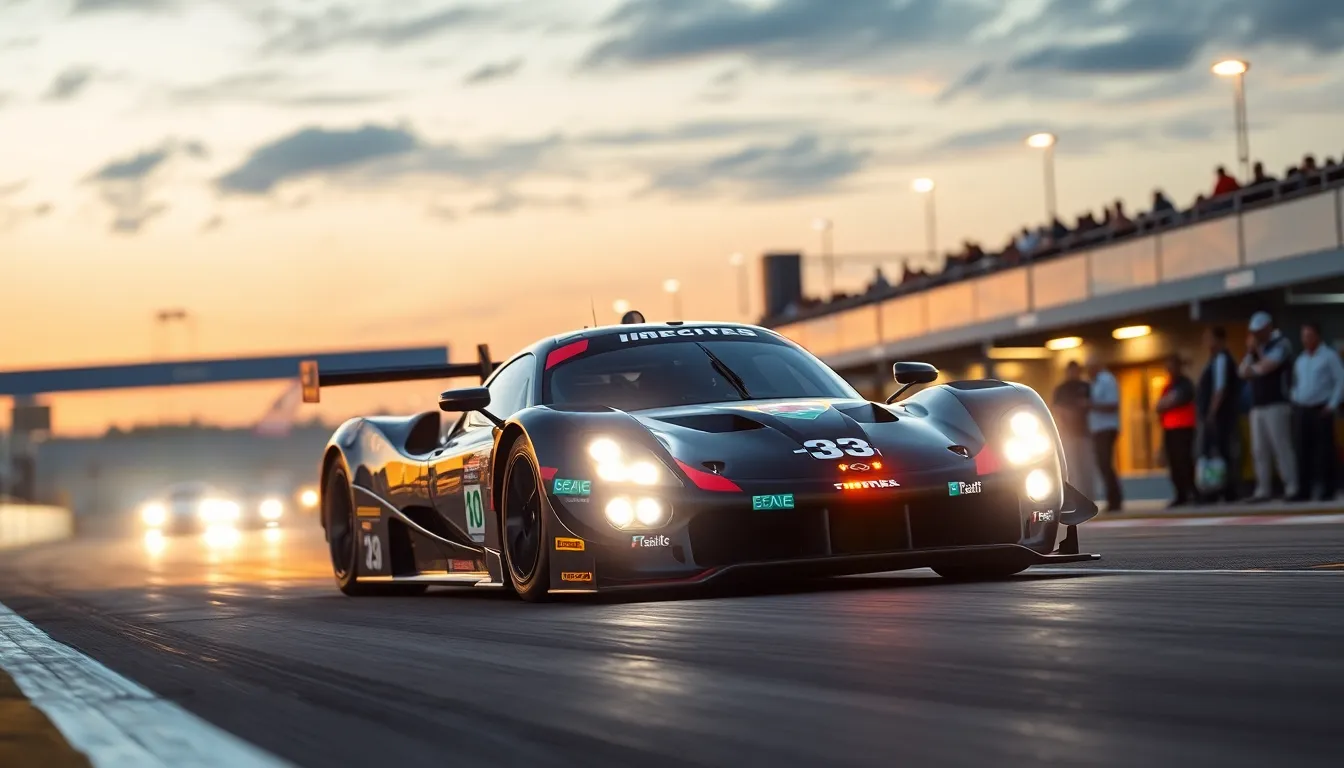
Sports car endurance racing represents the ultimate test of automotive engineering and human determination. We witness teams push both machines and drivers to their absolute limits across grueling hours-long competitions.
24 Hours of Le Mans Excellence
Le Mans stands as the most prestigious endurance race in motorsport history, challenging teams to complete the greatest distance possible over 24 continuous hours. Circuit de la Sarthe’s 8.47-mile layout combines high-speed straights with technical corners, creating a perfect proving ground for automotive manufacturers like Porsche, Ferrari, and Toyota.
Victory at Le Mans requires exceptional reliability engineering, with winning cars typically covering over 3,000 miles during the race weekend. Manufacturers invest millions developing hybrid powertrains and aerodynamic packages specifically for this legendary event. Teams face constant pressure balancing speed with mechanical preservation, knowing that one component failure can destroy months of preparation.
Weather conditions dramatically impact race strategy, with rain transforming the circuit into a treacherous battleground where visibility drops to mere meters. Night driving adds another layer of complexity, as drivers navigate at speeds exceeding 200 mph with limited visibility around the famous Porsche Curves and Indianapolis corners.
IMSA WeatherTech SportsCar Championship
IMSA’s premier series delivers industry-class endurance racing across North America, featuring four distinct classes competing simultaneously on the same track. GT Le Mans (GTLM) and GT Daytona (GTD) categories showcase production-based sports cars, while Daytona Prototype international (DPi) and LMP2 represent purpose-built racing prototypes.
Rolex 24 at Daytona serves as the championship’s crown jewel, attracting international talent including Formula 1 stars and NASCAR champions. Teams navigate the challenging 3.56-mile road course for 24 hours, with banking transitions and infield technical sections testing every aspect of car setup and driver skill.
Season highlights include the Twelve Hours of Sebring, where Florida’s bumpy airfield circuit punishes both cars and drivers with its concrete surface and elevation changes. Petit Le Mans at Road Atlanta concludes the Michelin Endurance Cup, featuring a demanding 10-hour race through Georgia’s rolling hills.
Driver Rotation Strategies
Endurance racing demands carefully orchestrated driver lineups, typically featuring three to four pilots sharing driving duties throughout extended races. Teams balance speed with consistency, pairing experienced veterans with young talents to maximize both pace and reliability over marathon distances.
Stint length calculations involve fuel consumption, tire degradation, and driver fatigue management, with most rotations occurring every 65 to 90 minutes during daylight hours. Night driving assignments often go to the most experienced team members, who possess superior skills for handling in reduced visibility conditions.
Physical conditioning plays a crucial role in driver selection, as cockpit temperatures can exceed 130 degrees Fahrenheit during summer races. Professional drivers maintain rigorous fitness programs focusing on neck strength, cardiovascular endurance, and heat tolerance to perform optimally during their assigned stints.
Communication systems enable real-time strategy adjustments, with drivers providing feedback about car handling, tire performance, and track conditions to optimize setup changes during pit stops. Teams analyze telemetry data continuously, adjusting driver coaching and car balance to maintain competitive pace throughout the entire race duration.
Karting: The Gateway to Professional Cars Racing
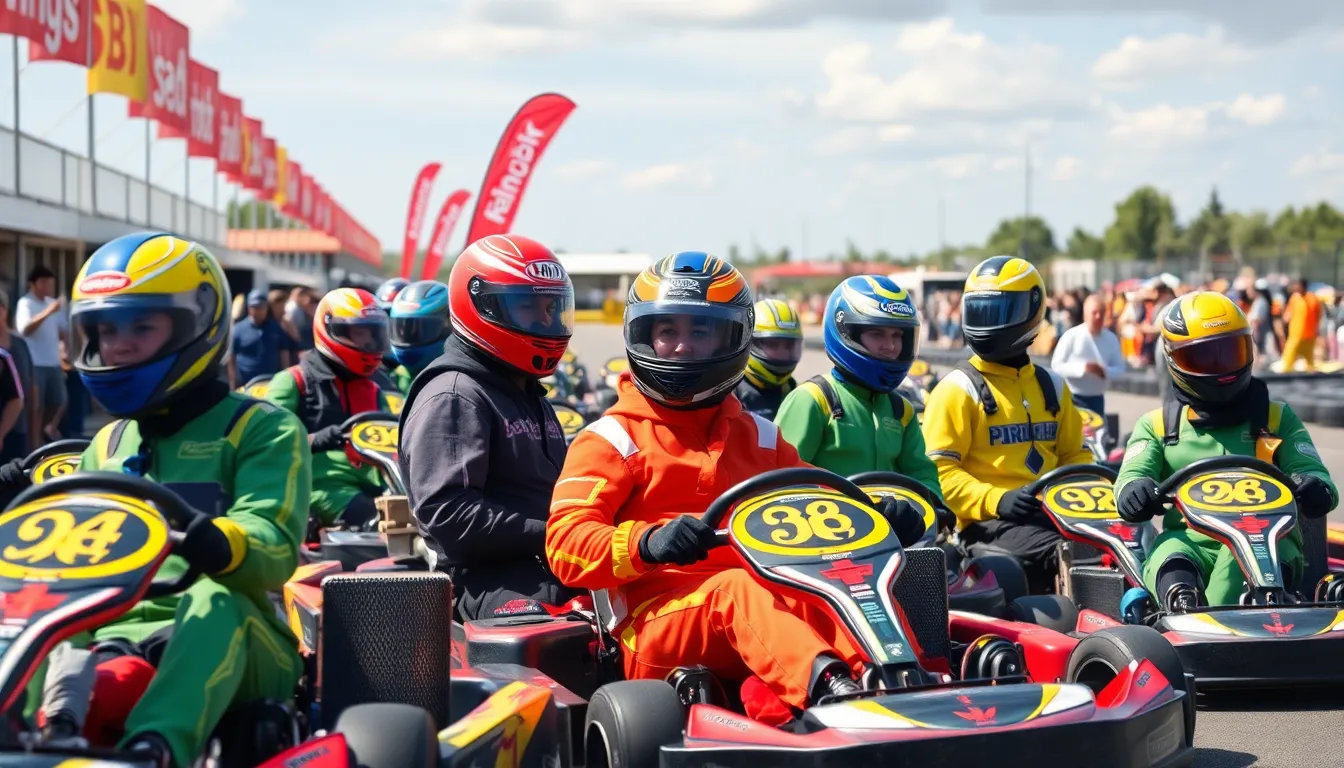
Karting serves as the fundamental stepping stone that transforms young racing enthusiasts into professional drivers across all major motorsport disciplines. Nearly every successful Formula 1, NASCAR, and IndyCar driver began their journey behind the wheel of a go-kart, making this accessible form of racing the true foundation of our sport.
Youth Development Programs
Youth karting programs provide structured pathways for aspiring drivers to develop essential racing skills from ages 5 to 18. National organizations like the Industry Karting Association (WKA) and International Karting Federation (IKF) establish standardized curricula that cover racecraft fundamentals, vehicle dynamics, and competitive etiquette across different age groups.
Racing academies such as the Skip Barber Racing School and Jim Russell Racing Drivers School integrate karting instruction with advanced simulator training and physical conditioning programs. These comprehensive programs typically cost between $3,000 to $15,000 annually, depending on the level of instruction and equipment provided.
Scholarship opportunities through organizations like the Formula 1 in Schools program and local racing clubs help talented young drivers overcome financial barriers to entry. Regional karting associations often partner with automotive manufacturers to sponsor promising drivers, providing equipment discounts and mentorship from professional racing teams.
Local Track Opportunities
Local karting facilities operate year-round across the United States, offering rental kart experiences and competitive leagues for drivers of all skill levels. Indoor tracks like K1 Speed locations provide climate-controlled environments with electric karts reaching speeds up to 45 mph, making karting accessible regardless of weather conditions.
Outdoor facilities such as New Castle Motorsports Park in Indiana and CalSpeed Karting in California feature full-size road course layouts that mirror professional racing circuits. These tracks host weekly racing leagues with entry fees typically ranging from $50 to $150 per race event, including kart rental and safety equipment.
Arrive-and-drive programs eliminate the need for personal kart ownership, allowing newcomers to participate in organized competitions using track-provided equipment. Many facilities offer racing licenses through accredited programs that serve as stepping stones to higher levels of motorsport competition.
Track rental options enable racing clubs and private groups to organize exclusive events, with typical costs ranging from $2,000 to $5,000 for full track access during prime hours. These opportunities often include timing systems, safety marshals, and technical support staff.
Professional Karting Leagues
Professional karting championships like the SKUSA SuperNationals and Rotax Max Challenge Global Finals attract top drivers from around the industry competing for prize money exceeding $100,000. These premier events feature multiple racing classes based on age groups and engine specifications, from Micro Max categories for 9-year-olds to DD2 Masters for drivers over 32.
Regional professional series such as the United States Pro Kart Series (USPKS) and Challenge of the Americas provide stepping stone competitions with points championships and manufacturer support packages. Entry fees for professional karting events typically range from $300 to $800 per race weekend, excluding travel and equipment costs.
Factory-backed karting programs from companies like Tony Kart, CRG, and Birel ART offer direct pathways to international competition and potential sponsorship opportunities. Drivers who excel in these programs often receive invitations to participate in manufacturer-sponsored ladder systems leading to Formula 3 and Formula 2 opportunities.
Elite karting competitions feature sophisticated data acquisition systems, professional mechanics, and media coverage that mirrors higher levels of motorsport. Championship winners frequently secure scholarships and financial backing worth hundreds of thousands of dollars to advance their racing careers in cars.
Electric Vehicle Racing: The Future of Motorsports
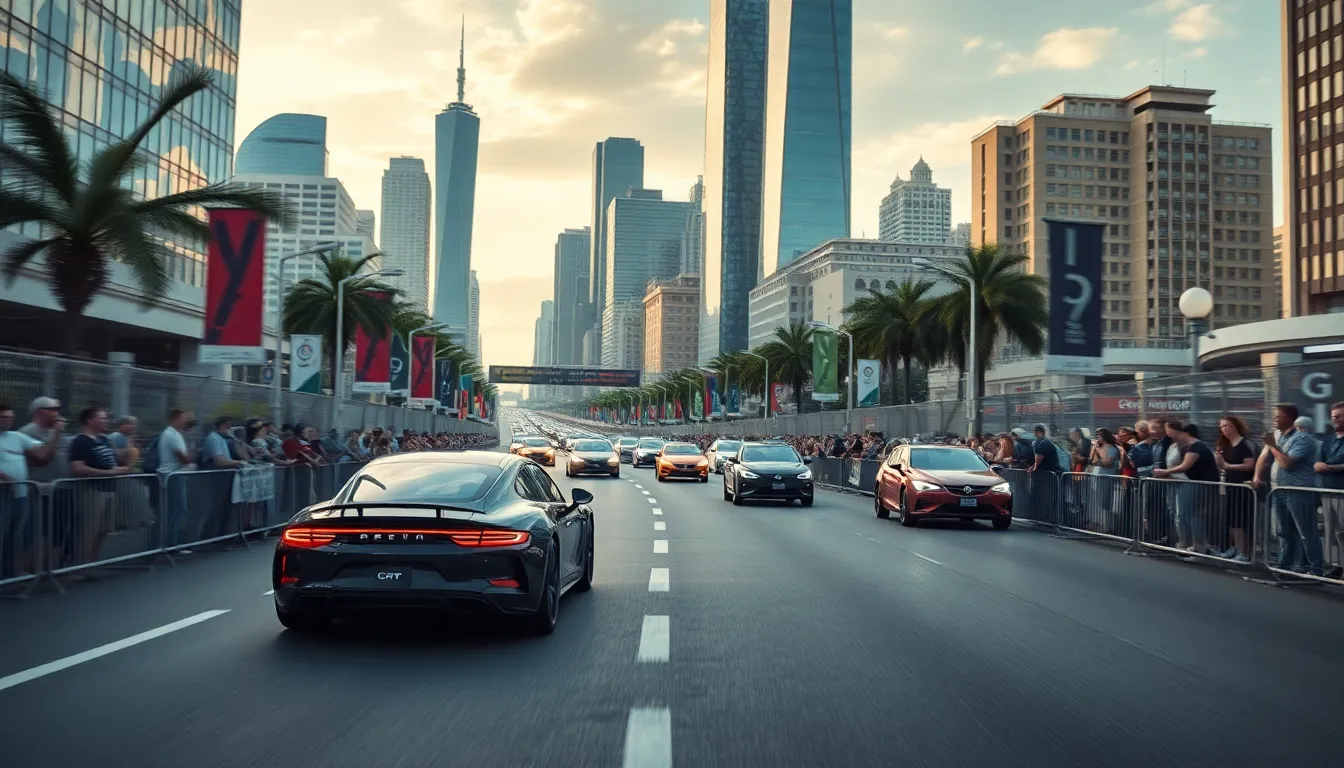
Electric racing represents motorsport’s boldest evolution, transforming how we experience competitive driving through cutting-edge technology and environmental consciousness.
Formula E Championship Growth
Formula E has established itself as the industry’s premier electric racing series since its inaugural season in 2014. We’ve witnessed remarkable expansion from 10 teams in the first season to 11 teams competing across 16 races in major cities worldwide. Street circuits in New York, London, Monaco, and Rome showcase electric racing’s urban appeal, bringing motorsport directly to metropolitan audiences.
Television viewership has grown exponentially, with over 400 million cumulative viewers tuning in globally during recent seasons. Social media engagement outpaces traditional motorsports, attracting younger demographics through innovative fan interaction technologies like FanBoost, which allows spectators to vote for additional power boosts during races.
Major automotive manufacturers including Mercedes-Benz, BMW, Jaguar, and Porsche have invested heavily in Formula E development programs. These partnerships demonstrate the series’ credibility as a testing ground for electric vehicle technology that directly influences consumer car development. Prize money has increased substantially, with championship winners earning over $1 million annually.
Sustainable Racing Initiatives
Carbon neutrality defines modern electric racing’s environmental mission across multiple series and events. Formula E achieved net zero carbon emissions certification in 2020, setting the standard for sustainable motorsport operations. We see comprehensive recycling programs that repurpose 95% of race weekend materials, from tire compounds to electronic components.
Renewable energy sources power racing facilities, with solar panels and wind turbines generating electricity for charging stations and track operations. Transportation logistics use biofuels and electric support vehicles, reducing the carbon footprint of moving teams and equipment between race locations.
Track surface innovations incorporate recycled materials, including reclaimed rubber and sustainable asphalt alternatives that reduce environmental impact while maintaining racing performance standards. Water conservation systems capture and reuse rainwater for track cleaning and facility maintenance operations.
Educational outreach programs partner with schools and universities to promote STEM learning through electric racing technology demonstrations. These initiatives reach over 100,000 students annually, inspiring the next generation of engineers and environmental advocates.
Battery Technology Innovations
Lithium ion battery systems have revolutionized electric racing performance through rapid technological advancement. Current Formula E cars use 54 kWh battery packs that deliver 335 horsepower during race conditions, with regenerative braking systems recovering up to 25% of total energy consumption during competition.
Charging speeds have improved dramatically, with fast charging capabilities allowing complete battery replenishment in under 30 minutes using specialized high voltage equipment. Energy density improvements enable longer race distances without compromising vehicle weight or handling characteristics.
Thermal management systems maintain optimal battery temperatures through liquid cooling circuits and advanced heat dissipation technologies. These innovations prevent performance degradation and extend battery lifespan beyond 1,000 charge cycles under racing conditions.
Wireless charging technology testing occurs during practice sessions, exploring inductive charging systems that could eliminate pit stops entirely. Battery swapping mechanisms allow teams to replace power units in under 60 seconds, demonstrating potential applications for commercial electric vehicle infrastructure.
Safety protocols include automatic fire suppression systems and impact resistant battery housings that exceed automotive industry standards. Emergency response teams receive specialized training for electric vehicle incidents, ensuring driver protection during high speed accidents or system malfunctions.
Safety Innovations That Revolutionized Cars Racing
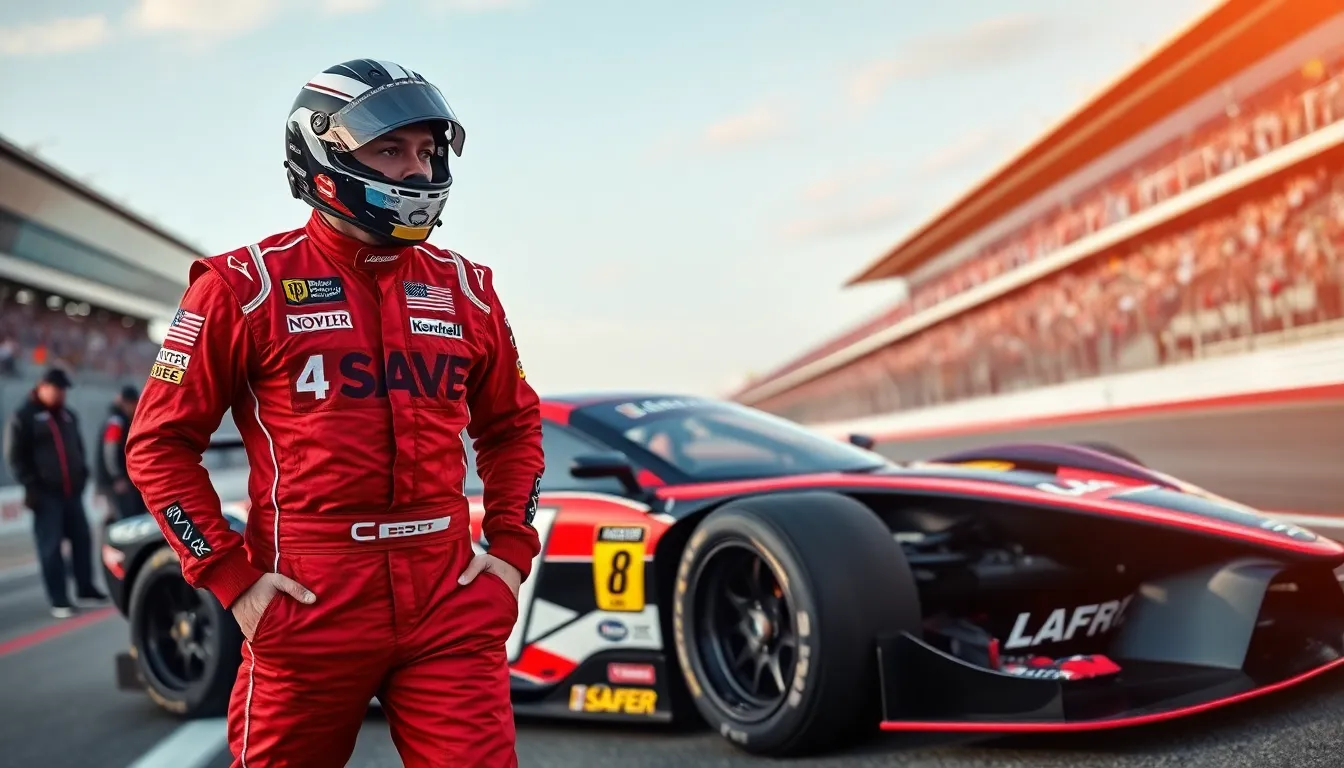
Racing’s evolution from raw speed contests to sophisticated motorsport wouldn’t be possible without groundbreaking safety innovations that protect drivers while maintaining competitive excitement. These technological advances transformed how we approach risk management in high-speed competition.
HANS Device Implementation
HANS (Head and Neck Support) devices protect drivers from basilar skull fractures during frontal impacts by limiting excessive head movement. NASCAR mandated these carbon fiber restraint systems in 2001 following Dale Earnhardt Sr.’s fatal crash at Daytona. Formula 1 adopted HANS technology in 2003, while IndyCar series implemented similar head and neck restraints across all competitions.
Modern HANS devices weigh approximately 500 grams and connect to drivers’ helmets through specialized tethers that release during emergency egress. Professional racing organizations now require FIA-approved HANS systems that undergo rigorous testing at impact speeds exceeding 50 mph. Driver feedback consistently demonstrates improved confidence levels when competing at speeds over 200 mph with proper head restraint systems installed.
Crash data analysis shows HANS devices reduce head injury severity by up to 86% during frontal collisions. Racing series worldwide report important decreases in life-threatening head trauma since mandatory implementation began. We’ve witnessed remarkable improvements in driver survival rates across Formula 1, NASCAR, IndyCar, and endurance racing disciplines through consistent HANS device usage.
Fire-Resistant Racing Suits
Fire-resistant Nomex suits provide crucial protection against flames and extreme heat during racing incidents. FIA standards require racing suits to withstand temperatures exceeding 700 degrees Fahrenheit for minimum 12-second exposure periods. Three-layer suit construction includes outer Nomex fabric, thermal barrier materials, and moisture-wicking comfort layers that maintain driver performance.
Professional racing suits undergo TPP (Thermal Protective Performance) testing that measures heat transfer through fabric layers. SFI 3.2A/5 rated suits offer 5-second protection periods, while higher SFI 3.2A/20 specifications provide extended 20-second thermal barriers. NASCAR drivers wear suits weighing between 3-4 pounds that cover entire body surfaces including wrists, ankles, and neck areas.
Modern suit technology incorporates breathable fabrics that reduce heat stress during long endurance races like Le Mans and Rolex 24 events. Manufacturers like Sparco, OMP, and Stand21 develop custom-fitted suits using 3D body scanning technology for optimal protection and comfort. We’ve observed dramatic reductions in burn injuries since mandatory fire-resistant suit implementation across major racing series.
Track Safety Improvements
Track safety barriers evolved from simple guardrails to sophisticated energy-absorbing systems that protect both drivers and spectators. SAFER (Steel and Foam Energy Reduction) barriers line modern oval tracks like Indianapolis Motor Speedway and Daytona International Speedway. These barriers feature steel faceplates backed by energy-absorbing foam that reduces impact forces by up to 40%.
Tire barriers and TecPro systems provide protection at road courses and street circuits through modular designs that absorb kinetic energy. Armco barriers with tire stacks protect vulnerable areas like bridge supports and track infrastructure from direct vehicle impacts. Gravel traps and paved runoff areas give drivers opportunities to regain control during off-track excursions at high speeds.
Catch fencing systems prevent cars from entering spectator areas during airborne incidents, with designs tested for impacts at speeds exceeding 200 mph. Modern racing facilities install HEICO barriers, which combine steel and foam technologies for optimal energy dissipation. We’ve documented substantial improvements in accident survivability through comprehensive track safety upgrades implemented over the past two decades across major racing venues worldwide.
Conclusion
We’ve witnessed how car racing continues to evolve while maintaining its core appeal of speed excitement and human achievement. From the roar of NASCAR engines to the precision of Formula E the sport offers something for every motorsport enthusiast.
The future looks incredibly promising with electric racing gaining momentum and safety innovations protecting drivers better than ever. Whether you’re drawn to the glamour of Monaco or the grassroots accessibility of local karting tracks there’s never been a better time to experience the thrill.
We encourage you to attend a race experience the atmosphere firsthand and discover why millions of fans worldwide share this passion. The checkered flag may mark the end of each race but it’s really just the beginning of your motorsport journey.
Frequently Asked Questions
What are the main types of car racing?
The main types of car racing include Formula 1 (international open-wheel racing), NASCAR (American stock car racing), IndyCar (American open-wheel racing), drag racing (straight-line acceleration), rally racing (off-road terrain racing), sports car endurance racing (long-distance competitions), karting (entry-level racing), and electric vehicle racing (Formula E). Each discipline offers unique challenges, from technical precision to raw speed and endurance testing.
When did car racing begin and how has it evolved?
Car racing began in the late 1800s with the first official motor race being the Paris-Rouen race of 1894. Early racing featured raw courage and minimal safety measures. Since the 1980s, computer-assisted engineering, wind tunnel testing, electronic systems, and advanced materials like carbon fiber have revolutionized the sport, transforming it from simple speed contests into sophisticated global entertainment spectacles.
What makes Formula 1 special compared to other racing series?
Formula 1 represents the pinnacle of international car racing, combining cutting-edge technology with unmatched driver skill. It features a championship points system, race weekends with practice sessions and qualifying rounds, legendary drivers like Lewis Hamilton and Michael Schumacher, successful teams like Ferrari and Mercedes, and iconic circuits such as Monaco’s Monte Carlo, Silverstone, and Spa Francorchamps.
How fast do NASCAR cars go and what is the Daytona 500?
NASCAR cars exceed 200 mph on oval tracks. The Daytona 500 is NASCAR’s crown jewel event, attracting over 100,000 fans and offering significant prize money, making it one of America’s most-watched sporting events. NASCAR includes the Cup Series, Xfinity Series, and Truck Series, each providing distinct racing experiences and career development paths for drivers.
What is the Indianapolis 500 and why is it significant?
The Indianapolis 500 is a legendary IndyCar race founded in 1911, drawing over 300,000 spectators annually during Memorial Day weekend. It’s one of motorsport’s most prestigious events, featuring traditional elements like the milk-drinking ceremony for winners. The race showcases breathtaking speeds and technical precision that rivals Formula 1 in America’s premier open-wheel racing series.
How fast are Top Fuel dragsters and what makes drag racing unique?
Top Fuel dragsters generate over 11,000 horsepower and complete a quarter mile in under 3.7 seconds, focusing purely on acceleration. Drag racing includes various categories like Funny Cars, Pro Stock (naturally aspirated engines), Pro Stock Motorcycles, and street legal classes. Bracket racing formats allow diverse vehicles to compete based on predicted times rather than raw speed.
What challenges do rally drivers face?
Rally drivers navigate challenging terrains including forests, mountains, and deserts in events like Monte Carlo Rally, Rally Finland, and Safari Rally Kenya. They rely heavily on co-drivers and navigation systems using pace notes. Extreme weather conditions from snow and ice to torrential rain and desert heat test drivers’ adaptability and endurance beyond traditional circuit racing.
What is endurance racing and why is Le Mans famous?
Endurance racing tests automotive engineering and human determination over extended periods. The 24 Hours of Le Mans challenges teams to cover the greatest distance possible in 24 hours. The IMSA WeatherTech SportsCar Championship and Rolex 24 at Daytona require driver rotation strategies, physical conditioning, and real-time communication, making them the ultimate marathon disciplines in motorsport.
How important is karting for future racing drivers?
Karting serves as the fundamental stepping stone for aspiring professional drivers across all major motorsport disciplines. Organizations like WKA and IKF establish standardized curricula through youth development programs. Local karting facilities offer accessible racing experiences, while professional karting leagues provide pathways to higher competition levels, nurturing future motorsport stars with crucial foundational skills.
What is Formula E and how is electric racing growing?
Formula E Championship, launched in 2014, represents the evolution of motorsports with electric vehicles. Races occur in major cities, attracting rapidly increasing viewership, particularly among younger demographics. The series emphasizes sustainability with carbon neutrality commitments and innovative recycling programs, while advancing battery technology enhances performance and efficiency, showcasing the future of electric vehicle infrastructure in motorsports.
What safety innovations have revolutionized car racing?
Key safety innovations include HANS (Head and Neck Support) devices that protect against severe head injuries, mandatory in NASCAR and Formula 1. Fire-resistant racing suits provide protection against flames and extreme heat. Track safety measures feature energy-absorbing barriers and catch fencing systems. These advancements have significantly reduced injuries and fatalities, ensuring better protection for drivers and spectators.

